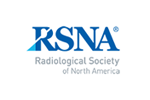Acute Nonlocalized Abdominal Pain
Stomach pain occurs for various reasons. Imaging may help identify the source of pain. CT with contrast in the vein is the preferred examination for stomach pain with or without a fever. Contrast by mouth can be substituted in the event of poor kidney health or allergy to intravenous (IV) contrast materials. Pain with a fever may indicate infection or an abscess. CT is useful if an abscess is suspected because the doctor can drain the abscess at the same time. MRI may be helpful in distinguishing infected versus noninfected fluid. PET is useful if previous CT imaging did not find the source of the pain.
CT with contrast is the preferred scan for stomach pain after surgery. A complementary fluoroscopic study may be useful in evaluating postsurgical leaks. PET is not useful for stomach pain after surgery because it could lead to false-positive results.
CT is appropriate for stomach pain in people with weak immune systems. For patients unable to undergo CT, MRI may be helpful. MR enterography (special MRI with IV and swallowed contrast) can be used for stable patients with a history of inflammatory bowel disease. PET can also be useful if previous CT imaging did not find the source of pain.
Pregnant patients with stomach pain may receive an MRI or an ultrasound to diagnose urinary tract infection, bladder stones, ectopic pregnancy, ovarian torsion, adnexal masses, placental abnormalities, acute cholecystitis, pancreatitis, or inflammatory bowel disease.
This page was reviewed on December 15, 2021



